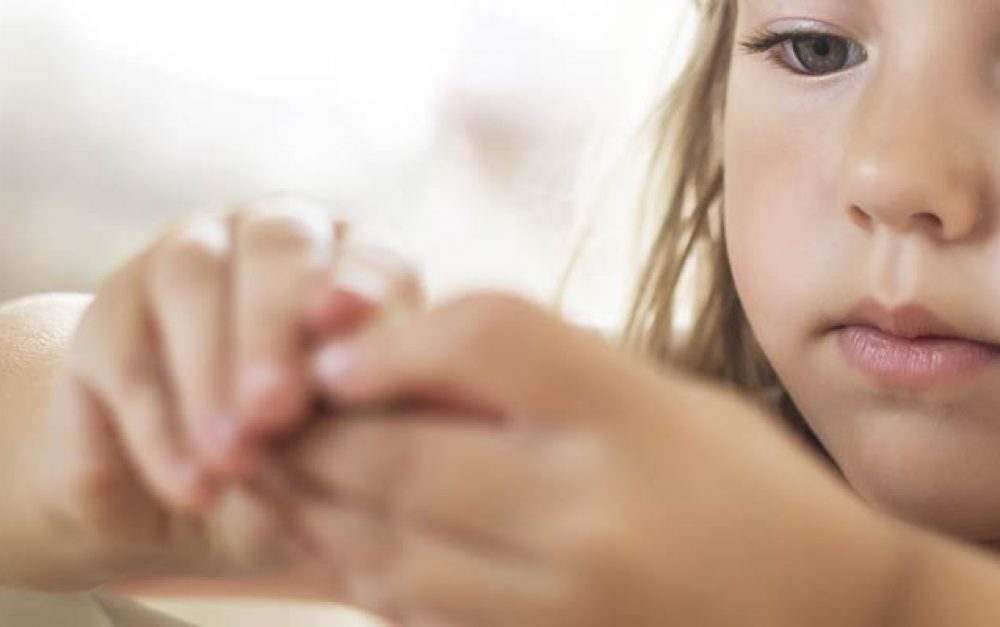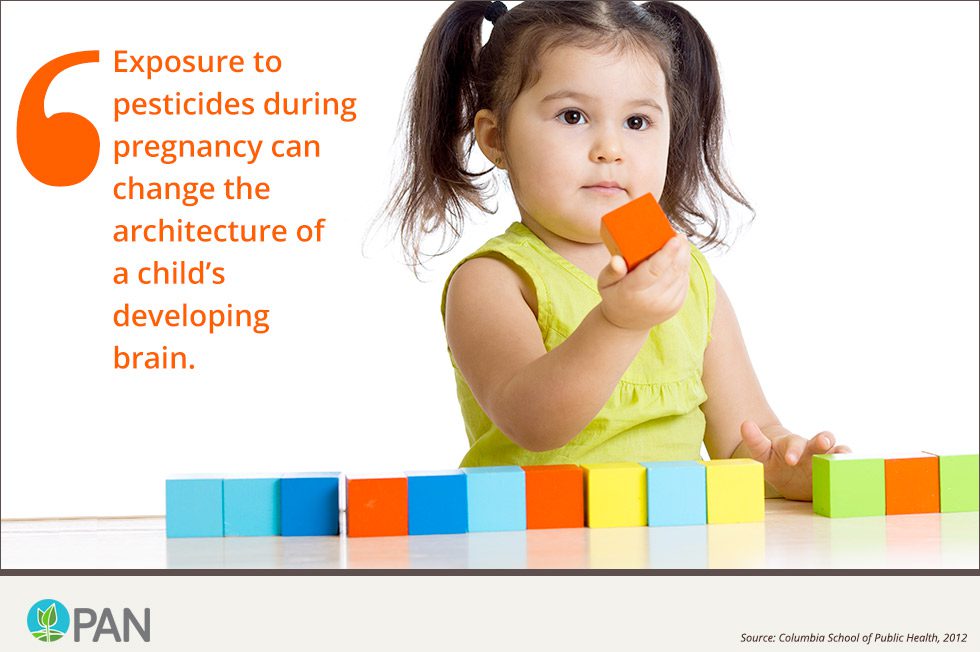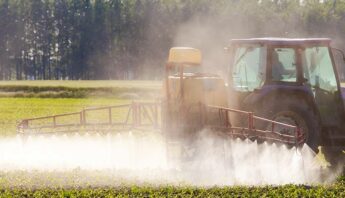Today’s kids are sicker than children were a generation ago, and pesticides are part of the reason why.
From learning disabilities and autism to cancers and more, a startling number of childhood diseases and disorders are on the rise.
As our report A Generation in Jeopardy highlights, the science leaves little room for doubt: pesticides are contributing to these trends. Even low-level chemical exposures can have cascading effects that last for generations.
What we’re doing
The good news? This is a problem we can all do something about.
Parents can make immediate changes in how they control pests at home and what foods they feed their children. This will help.
But truly protecting our children requires getting child-harming pesticides out of agriculture, off our food and out of the places kids live, learn and play — which means major shifts in farming, food and pest control policies across the country.
And these shifts are beginning to happen. From kitchen tables to state capitals, from school districts to family farms, people are finding ways to better protect children from health-harming pesticides.
We’re working with partners across the country — and around the world — to spark a conversation about kids and pesticides, and put policies in place that better protect children from harm.
Get involved!
It’s time to roll up our sleeves and get to work. Below you’ll find the Top 10 things you can do — right now — to get started.
If you’re in California or Hawai’i, you’ll find details in the “Protecting rural children” section below about how you can help win stronger rules protecting rural schoolchildren from pesticides used in nearby fields.
Interested in the global fight? Find out more about our “Terrible 20” campaign targets the pesticides that are most harmful to kids around the world.
Dig deeper
Find out more about the effects of pesticides on children’s health, and how you can get involved.
Kids & pesticides don’t mix
Pediatricians have understood for decades that children interact with their environment much differently than adults.
Infants and children have speedier metabolic rates, which means they take in more water, food and air. Their bodies are also less able to detoxify and expel harmful chemicals.
In short, a child is absorbing a higher load of pesticides at a time when his or her body is least equipped to protect itself.
Here are some of the most common ways kids are exposed to pesticides:
In the womb: When a fetus is exposed at particular times — when the architecture of the brain is under construction, or the reproductive organs are taking shape — the normal process of development can be derailed, sometimes with irreversible effects.
Home & daycare: If pesticides are used in homes, lawns or gardens where an infant or toddler is exploring the world, exposure is a near certainty. Eating foods coated with pesticides — even when residues are scant — has been linked to lower IQs and neurodevelopmental delays.
Schools & playgrounds: Use of toxic chemicals to control pests in schools and on playing fields make the school environment less safe for growing bodies and developing minds. In rural areas children face additional risk, as pesticides may drift onto school grounds and seep into water supplies from nearby fields.
Way back in 1993, scientists at the National Research Council made the urgent case that children’s small and growing bodies need special protection from pesticide exposure.
More than 20 years later, childhood diseases linked to pesticides are still climbing. The American Academy of Pediatrics spoke out in 2012, urging policymakers to do more now to protect children from pesticides and promote safer pest control alternatives.
Protecting rural children
In addition to the low-level exposure from pesticide residues on food experienced by children across the country, children in rural areas can also face pesticides drifting from nearby fields or contaminating water supplies.
A groundbreaking 2014 report from California’s Department of Public Health clearly documented this problem. The study found that more than 500,000 children in the state attend school within ¼ mile of pesticide applications. And more than 100,000 (mostly Latino) children go to school near fields with the heaviest use of dangerous chemicals.
California: After years of pressure from affected communities, the state’s Department of Pesticide Regulation (DPR) is drafting new rules to better protect rural schoolchildren from pesticides. Hundreds of rural residents are testifying at public hearings across the state with parents, teachers and health professionals calling for restrictions on child-harming chemicals and support for innovative healthy farming around schools.
Sarah Aird, director of Californians for Pesticide Reform, highlighted the coalition’s goals:
All schoolchildren, regardless of geography or race, deserve to be protected from hazardous and volatile agricultural pesticides, and we hope and expect DPR will take significant steps.
Hawai’i: As ground zero for testing and development of genetically engineered (GE) crops, Hawai’i’s rural communities are facing unprecedented exposure to the resulting pesticide runoff and drift.
Deeply concerned about the impacts of these chemicals on the health of their children, engaged community members on both Kaua’i and Mau’i won local buffer zones and pesticide use reporting. PAN is working with local groups to defend these measures (challenged in court by the pesticide industry) and put additional protections in place around schools and other sensitive sites.
Top 10 ways to protect kids from pesticides<>
1. Choose kid-safe foods. Whenever possible, shop for fruits and veggies free of child-harming pesticides. Find pesticide-free or organic produce from your local farmer, at farmers’ markets — or plant your own garden!
2. Keep homes kid-safe. Use safer, alternative methods to control pests in homes, on your pets, and on your lawns and gardens.
3. Create safer child care. Ask your daycare facility about the pesticides they use, and urge them to join the Eco-Healthy Child Care program run by our partners at the Children’s Environmental Health Network.
4. Make schools pesticide-free, inside & out. Learn what communities across the country are doing to create school environments free of pesticides. If you’re in California or Hawai’i, join our efforts to protect schoolchildren from pesticide drift.
5. Link local farms to school plates. Urge your school district to link with a pesticide-free farm-to-school program to protect children from pesticide residues and build the family farm economy.
6. Spread the word about pesticides & health. Download our Kids on the Frontline report to spark a conversation on pesticides and children’s health.
7. Make public places safe for kids. Toddlers and young children spend hours and hours at parks and playgrounds. Making these places pesticide-free goes a long way toward protecting their health.
8. Support green & healthy farming. Our policies should better support farmers who grow healthy, pest-free crops without relying on pesticides that can harm children. Let’s make this a national priority.
9. Press policymakers to put children’s health first. Pesticides stay on the market long after science shows they harm children’s health, and new pesticides are approved that may increase the risk. Help press for policies that put children’s health first.
10. Vote for kids’ health. From local to state to national elections, hold politicians accountable for supporting safe and healthy food and farming, and putting kids’ health before pesticide industry profits.
PAN International is calling on governments around the world to take action on a Terrible 20 list of pesticides known to be particularly harmful to children’s health.
The Terrible 20 is part of a longer list of “highly hazardous pesticides” targeted for global action by PAN International.
As PAN organizer Medha Chandra explains:
The legacy we leave our children begins with the actions we take today to restrict and phase out pesticides most harmful to their health and intelligence.
The global campaign calls on governments of all levels to take more aggressive action to protect children’s health from pesticides, starting with immediate reductions in and restrictions on use.
Progress has been made on some of the Terrible 20, in the U.S. — but, unfortunately, many of the chemicals are still widely used. The neurotoxic pesticide chlorpyrifos, for example, is still applied to crops across the country, from corn to citrus and grapes.








